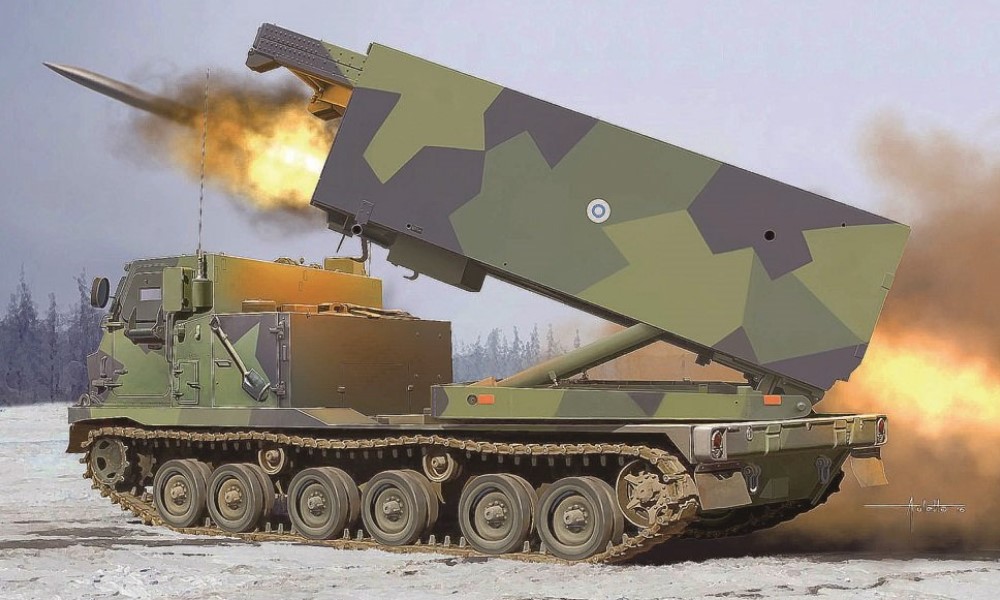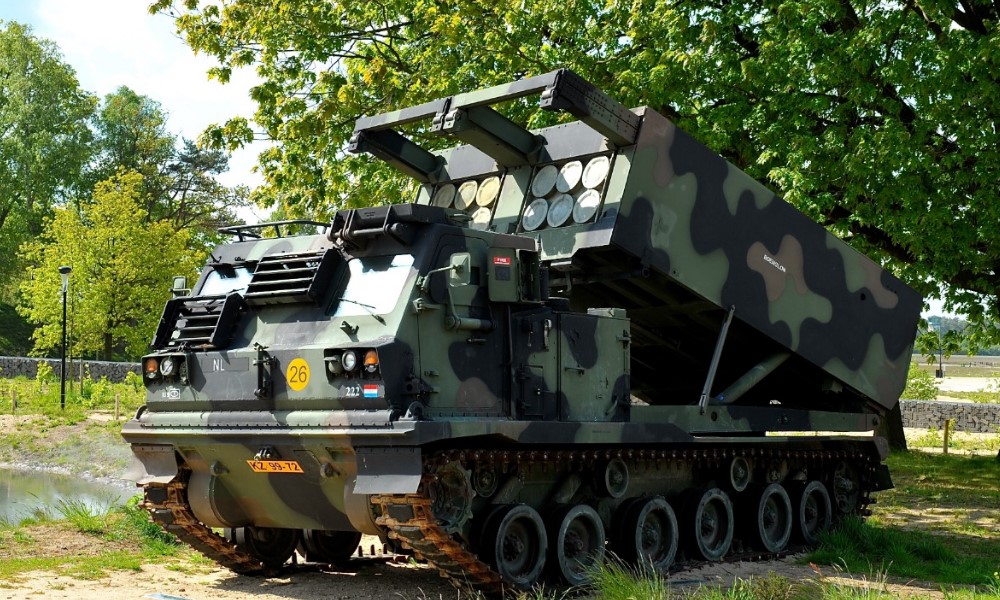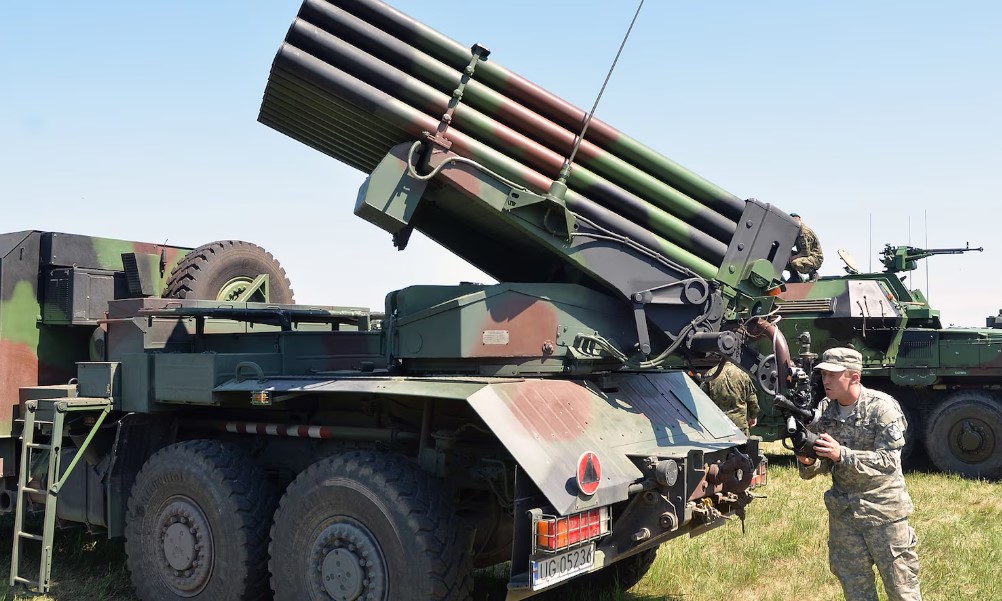Armored Self-Propelled Rocket Launchers (ASPRLs) are among the most sophisticated and versatile systems in modern military arsenals. Their combination of mobility, protection, and firepower makes them essential in various battlefield scenarios, from rapid-response strikes to extended bombardments. This comprehensive guide will delve into the details of what ASPRLs are, explore their benefits, and offer insights into the top five systems available today.
Table of Contents
ToggleWhat is an Armored Self-Propelled Rocket Launcher?

An Armored Self-Propelled Rocket Launcher (ASPRL) is a mobile military vehicle equipped with rocket systems capable of delivering high-impact strikes.
Unlike static or towed rocket artillery, ASPRLs are built on armored, self-propelled platforms, allowing them to move quickly across various terrains while offering protection for their crews.
These systems are designed for launching multiple rockets in rapid succession, targeting enemy positions, fortifications, or large battlefield areas.
Key Characteristics of ASPRLs

Armored Self-Propelled Rocket Launchers (ASPRLs) are essential components in modern military arsenals due to their unique blend of mobility, protection, and firepower. These systems are specifically designed to address the challenges of delivering heavy firepower in dynamic combat environments, where mobility and rapid deployment are critical. Below are the key characteristics that define ASPRLs and make them indispensable on the battlefield.
1. Mobility
ASPRLs are designed to be highly mobile, allowing them to maneuver across various terrains, including rugged landscapes, deserts, and urban environments. Equipped with powerful engines, these vehicles can reach speeds between 60 to 85 km/h depending on the model. Their self-propelled nature gives them the advantage of being able to relocate quickly after launching rockets, reducing the risk of enemy counterattacks. This mobility is crucial for shoot-and-scoot tactics, where rapid redeployment is necessary to avoid being targeted by enemy artillery or airstrikes.
Feature: High-speed engines capable of navigating diverse terrains
Advantage: Rapid repositioning after firing to avoid detection or retaliation
2. Protection
One of the defining features of ASPRLs is their armored chassis, which provides protection for the crew and critical systems. These vehicles are fortified with layers of armor that can withstand small arms fire, shrapnel, and sometimes even direct hits from heavier weapons. The level of protection varies by model; for example, systems like the TOS-1A are built on tank chassis, providing heavy armor that shields the crew from even more intense battlefield threats.
Feature: Armored chassis with ballistic protection
Advantage: Enhanced survivability for the crew in hostile environments
3. Firepower
ASPRLs are equipped with rocket launchers capable of delivering a significant volume of firepower over large areas. These systems can launch multiple rockets simultaneously, often saturating enemy positions with heavy fire. The payload varies by system, ranging from 6 rockets in models like the M142 HIMARS to 30 thermobaric rockets in the TOS-1A. Additionally, some ASPRLs can be equipped with tactical missiles, offering precision strikes over extended ranges.
Feature: Multi-rocket launch capabilities with diverse payload options
Advantage: Effective area saturation or precision targeting in combat
4. Versatility
ASPRLs are versatile systems that can be adapted to various mission profiles. Whether providing close-range urban fire support, long-range bombardments, or precision strikes, these vehicles are equipped with advanced targeting systems to ensure accuracy. Modular systems like the Lynx KF41 allow for different configurations, enabling them to be customized based on mission requirements.
Feature: Modular configurations and advanced targeting systems
Advantage: Adaptability to diverse combat scenarios and strategic flexibility
5. Self-Sufficiency
As self-propelled units, ASPRLs are independent of additional transport or towing vehicles. This makes them logistically efficient, requiring fewer resources to deploy and maintain. Their all-in-one design also enables rapid deployment in high-intensity combat situations, where logistical support may be limited.
Feature: Self-propelled, independent systems
Advantage: Reduced logistical needs and quicker deployment
Benefits of Using Armored Self-Propelled Rocket Launchers

1. Enhanced Mobility and Flexibility
One of the most significant advantages of ASPRLs is their mobility. Traditional artillery systems often rely on being stationary or require towing by other vehicles. ASPRLs eliminate this limitation by integrating the rocket launcher with a mobile, armored chassis. This design allows for rapid relocation after launching, reducing the risk of counterattacks from enemy forces. Whether in open terrain or urban environments, ASPRLs can move swiftly to avoid detection, reposition themselves, and fire again when necessary.
2. Superior Protection for Crews
Unlike towed rocket launchers, which expose their crews to enemy fire, ASPRLs provide significant protection. The armored vehicle is designed to withstand small arms fire, shrapnel, and some heavier projectiles. For example, systems like the TOS-1A, which are built on tank chassis, offer even greater levels of protection, shielding the crew from the most intense battlefield conditions.
3. Powerful Firepower with Precision
ASPRLs are designed to deliver a high volume of firepower over a wide area. These systems can launch multiple rockets in quick succession, allowing for the saturation of enemy positions. Modern ASPRLs are also equipped with advanced targeting systems, ensuring that rockets hit their intended targets with precision. This level of firepower, combined with mobility, makes ASPRLs an irreplaceable asset in modern military operations.
4. Versatility in Combat
The versatility of ASPRLs allows them to be used in a variety of combat scenarios. From long-range bombardments, suppressing enemy artillery, and destroying fortifications, to close-range urban combat with thermobaric rockets, ASPRLs adapt to the tactical needs of the battlefield. Systems like the Lynx KF41, which offer modular configurations, are particularly valuable because they can be customized to meet specific operational requirements.
Top 5 Armored Self-Propelled Rocket Launchers of 2024
Let’s explore five of the most advanced ASPRL systems currently in use. Each of these systems offers unique features, benefits, and real-world applications. Below is a detailed analysis of these products, including key features, use cases, and where to purchase them.
1. M142 HIMARS
The M142 High Mobility Artillery Rocket System (HIMARS) is one of the most versatile and widely used ASPRLs in the world. Built by Lockheed Martin, this system is known for its mobility, precision, and adaptability.
Key Features:
- Range: Capable of launching rockets with a range of up to 300 km.
- Payload: Holds six rockets or one ATACMS missile, allowing for flexibility in firepower.
- Speed: Reaches speeds of up to 85 km/h, making it highly mobile even in rugged terrain.
- Protection: Features an armored cab that provides protection for the crew against small arms fire and shrapnel.
Use Case:
The M142 HIMARS is ideal for precision strikes where speed and mobility are critical. Its ability to launch and move quickly makes it suitable for fast-paced combat scenarios, reducing the risk of being targeted by enemy forces.
Price: $5 million
Where to Buy: Purchase M142 HIMARS
2. BM-30 Smerch
The BM-30 Smerch is a multiple rocket launcher developed by the Soviet Union and is now used by several nations worldwide. It is known for its extended range and firepower.
Key Features:
- Range: Can fire rockets up to 90 km, making it one of the longest-range rocket systems available.
- Payload: Capable of launching 12 rockets in rapid succession.
- Speed: Maximum speed of 60 km/h.
- Protection: Its steel armor provides essential protection for the crew, ensuring operational durability in hostile environments.
Use Case:
The BM-30 Smerch excels in long-range bombardment operations. It is particularly effective at targeting enemy artillery or fortified positions, delivering a devastating volume of firepower from a distance.
Price: $4.5 million
Where to Buy: Purchase BM-30 Smerch
3. TOS-1A
The TOS-1A is a heavy flamethrower system that uses thermobaric rockets. Mounted on a T-72 tank chassis, this system is designed for maximum destruction in close-range combat.
Key Features:
- Range: Though limited to 6 km, its thermobaric rockets are highly effective in short-range combat.
- Payload: Can launch 30 thermobaric rockets in a short period.
- Speed: Capable of moving at 60 km/h despite its heavy tank chassis.
- Protection: Provides heavy armor protection for the crew, making it highly resistant to enemy fire in close combat.
Use Case:
The TOS-1A is ideal for urban warfare and close-range combat. Its thermobaric rockets create shockwaves that devastate enemy personnel and equipment in fortified structures.
Price: $6 million
Where to Buy: Purchase TOS-1A
4. PZH2000
The PZH2000 is a German self-propelled howitzer used extensively by NATO forces. It offers a perfect blend of mobility, protection, and firepower.
Key Features:
- Range: Capable of firing shells up to 40 km.
- Payload: Holds up to 60 shells, allowing for sustained bombardment.
- Speed: Reaches speeds of 60 km/h, making it a fast-deploying artillery system.
- Protection: Its composite armor provides protection against heavy machine gun fire and shrapnel.
Use Case:
The PZH2000 is best suited for long-range artillery support in conventional warfare, where accuracy and sustained firepower are essential.
Price: $7 million
Where to Buy: Purchase PZH2000
5. Lynx KF41
The Lynx KF41 is a modular tracked vehicle capable of being equipped with various rocket systems, offering a high degree of adaptability.
Key Features:
- Range: Offers a maximum range of 500 km depending on the configuration.
- Payload: Can carry 12-16 rockets, depending on its setup.
- Speed: Reaches a maximum speed of 70 km/h.
- Protection: Equipped with modular armor, which can be upgraded for additional protection based on mission requirements.
Use Case:
The Lynx KF41 is highly adaptable, making it suitable for a wide range of combat missions, from fire support to direct engagements. Its modular design allows for easy upgrades and configuration changes.
Price: $8 million
Where to Buy: Purchase Lynx KF41
Detailed Comparison Table of Armored Self-Propelled Rocket Launchers
| Product | Range | Payload | Speed | Protection | Price | Use Case |
|---|---|---|---|---|---|---|
| M142 HIMARS | 300 km | 6 rockets/1 missile | 85 km/h | Armored cab | $5 million | Precision fast-strike operations |
| BM-30 Smerch | 90 km | 12 rockets | 60 km/h | Steel armor | $4.5 million | Long-range bombardment |
| TOS-1A | 6 km | 30 thermobaric rockets | 60 km/h | Heavy tank armor | $6 million | Urban combat support with high firepower |
| PZH2000 | 40 km | 60 shells | 60 km/h | Composite armor | $7 million | Long-range artillery support |
| Lynx KF41 | 500 km | 12-16 rockets | 70 km/h | Modular armor | $8 million | Highly adaptable for various rocket artillery missions |
Use Case Details: Solving Modern Military Challenges
1. Fast-Strike Capabilities
The M142 HIMARS excels in fast-strike operations, offering the perfect combination of speed and precision. Militaries worldwide rely on this system to deliver rapid, accurate strikes, then relocate before enemy forces can retaliate. Its lightweight, mobile design makes it a standout choice for quick deployments.
2. Long-Range Bombardment
For extended-range operations, the BM-30 Smerch is an ideal choice. Capable of launching 12 rockets up to 90 km away, it provides devastating firepower that can neutralize enemy artillery and command centers, significantly reducing their operational capacity.
3. Urban Combat
The TOS-1A is a specialized solution for urban warfare. Equipped with thermobaric rockets, it is designed to clear out enemy forces from fortified positions, bunkers, and enclosed areas. The TOS-1A creates shockwaves that are particularly effective in urban combat scenarios where enemies hide in buildings.
4. Sustained Artillery Support
In prolonged warfare scenarios, the PZH2000 delivers sustained artillery support over long distances. It is particularly useful in conventional battlefield engagements where continuous fire is required to suppress or neutralize enemy forces.
5. Multi-Role Adaptability
The Lynx KF41 offers unmatched versatility. Its modular design allows for various configurations, making it an excellent choice for missions requiring flexibility. Whether equipped with long-range rockets or short-range firepower, the Lynx KF41 can be adapted to meet the specific needs of the mission.
Where to Buy Armored Self-Propelled Rocket Launchers
Purchasing military-grade equipment such as ASPRLs requires working with authorized military suppliers or defense contractors. Some recommended vendors include:
- M142 HIMARS Supplier
- BM-30 Smerch Supplier
- TOS-1A Supplier
- PZH2000 Supplier
- Lynx KF41 Supplier
FAQs
1. What is the range of the M142 HIMARS?
The M142 HIMARS can launch rockets up to a range of 300 km, depending on the type of rocket or missile used.
2. How much does the BM-30 Smerch cost?
The BM-30 Smerch is priced at around $4.5 million, making it one of the more affordable long-range rocket systems available.
3. Can the TOS-1A be used in urban combat?
Yes, the TOS-1A is specifically designed for urban combat scenarios. Its thermobaric rockets are highly effective in close-quarters combat, creating shockwaves that incapacitate enemy forces inside buildings and fortified positions.
4. What is the maximum range of the PZH2000?
The PZH2000 has a maximum firing range of 40 km, allowing it to provide long-range artillery support in conventional warfare settings.
5. Where can I buy the Lynx KF41?
You can purchase the Lynx KF41 through authorized military suppliers. Visit this link for more information on how to buy it for your defense needs.